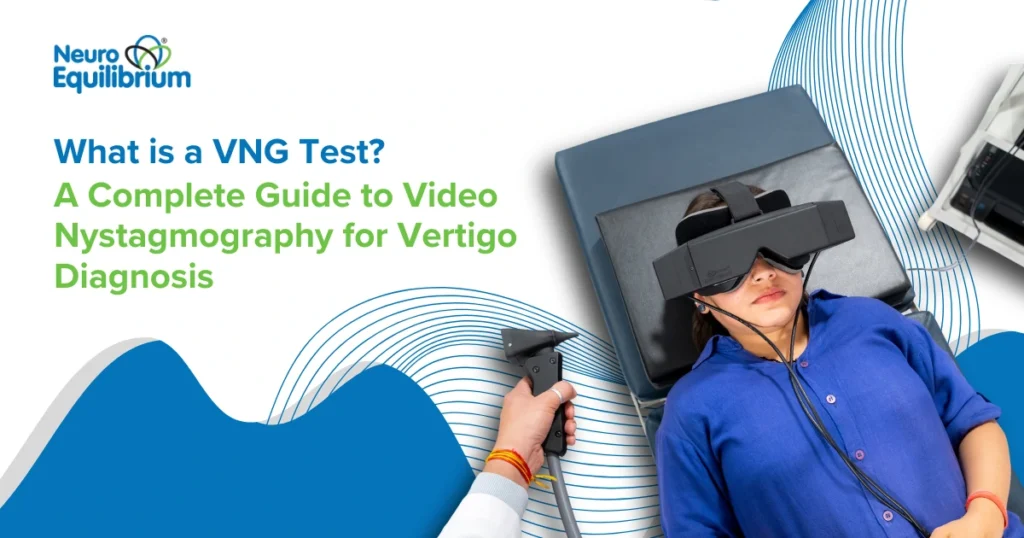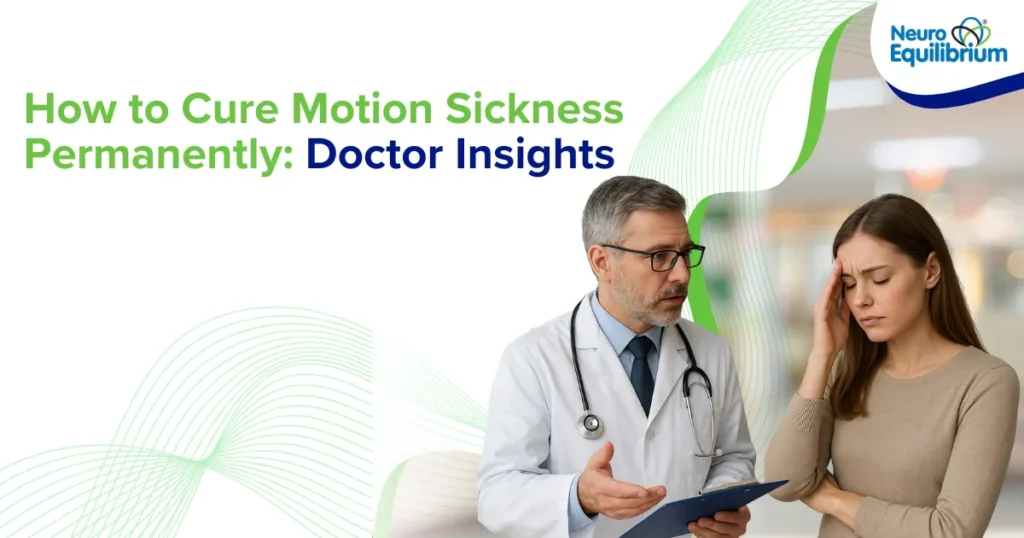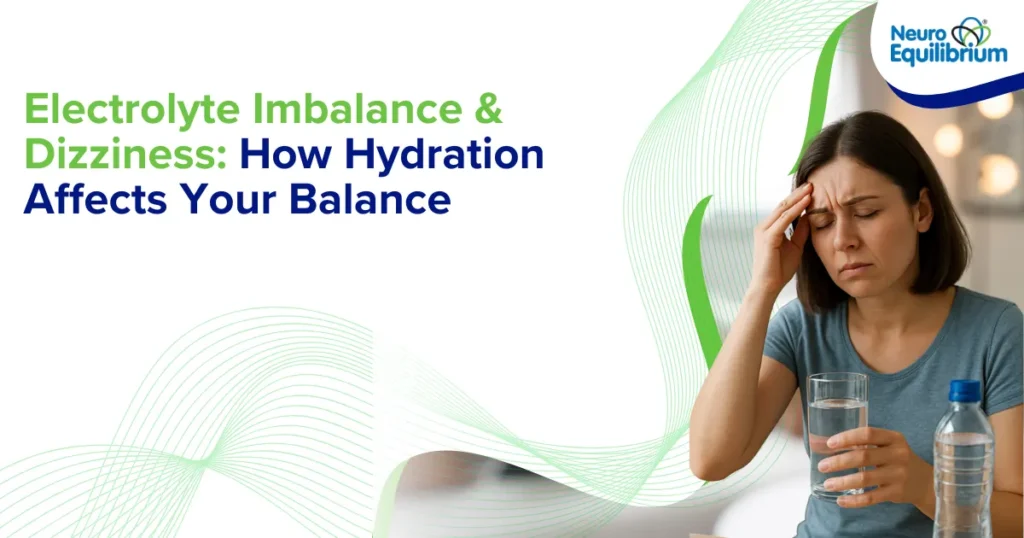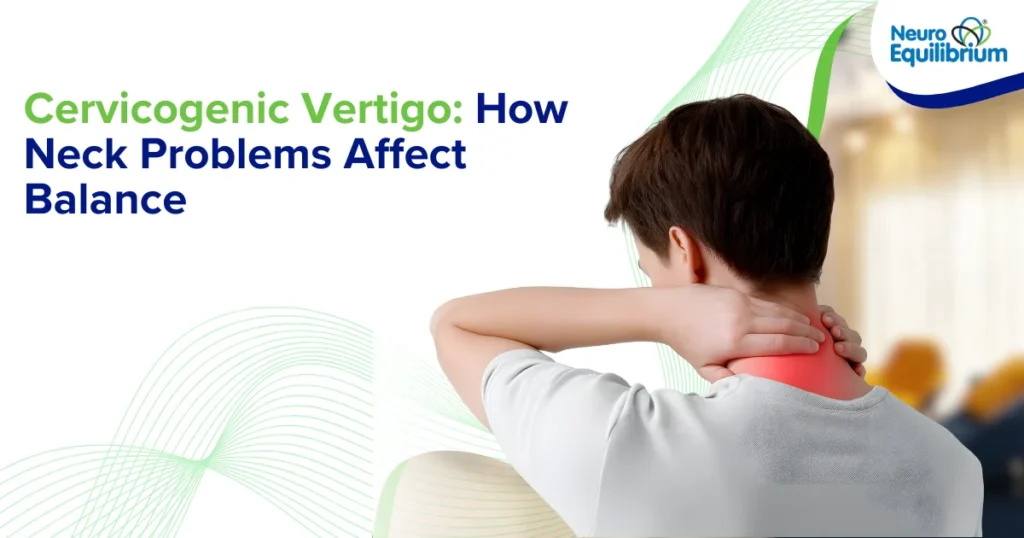Dizziness and vertigo are common problems that many people experience at some point in their lives. It’s important to find out what causes these symptoms so that they can be treated effectively.
Videonystagmography (VNG) is a test that helps doctors examine the vestibular system, which controls balance. VNG tracks eye movements in response to certain stimuli, helping identify any vestibular function issues. This test is crucial for diagnosing vestibular disorders because it gives valuable information about the problems causing dizziness and vertigo.
Explore More About Vertigo Diagnosis:
- Top 3 Essential Vertigo Tests
- Understanding Vertigo And Balance Disorders
- How Technology Has Changed Vertigo And Dizziness Treatment
Understanding Vertigo and Nystagmus
What is Vertigo?
Vertigo is a common condition that often feels like spinning or dizziness, creating a sense of imbalance or a feeling that your surroundings are shifting. Unlike general dizziness, which can make you feel lightheaded, vertigo specifically comes from problems in the vestibular system, which helps maintain balance.
Understanding the causes, symptoms, and treatments for vertigo is crucial for managing the condition and improving the quality of life for those affected.
Common Causes of Vertigo
Several factors can cause vertigo, including:
Dislodging of Otoconia (leading to BPPV): A common cause of vertigo happens when tiny calcium crystals, called otoconia, become dislodged in the inner ear and move into the ear’s semicircular canals. This condition is known as Benign Paroxysmal Positional Vertigo (BPPV) and can lead to brief episodes of dizziness triggered by head movements.
Fluid Buildup in the Inner Ear (leading to Menière’s Disease): Excess fluid in the inner ear can cause episodes of vertigo, ear ringing (tinnitus), and hearing loss. This chronic condition can significantly affect daily life.
Inflammation of the Vestibular Nerve (leading to Vestibular Neuritis): Infections, often viral, can cause inflammation of the vestibular nerve, disrupting balance and leading to sudden, severe vertigo.
Viral Infections: Sometimes, viral infections can spread to the inner ear or affect the nerves responsible for balance. When this happens, it can lead to dizziness or even a spinning sensation known as vertigo. Common viruses like colds or the flu can sometimes cause these inner ear issues.
Head Injuries: Injuries to the head, like from a fall or a bump, can damage the inner ear’s balance system, called the vestibular system. This can lead to ongoing dizziness, trouble staying balanced, and feelings of vertigo.
Migraines: For some people, migraines are not just about headaches. Some may feel dizzy or experience vertigo as part of a migraine attack, even if they don’t feel any pain in their head.
Understanding these causes is important for effective diagnosis and treatment. Identifying the type of vertigo is often the first step in addressing the underlying issues, which makes assessments like VNG tests vital for an accurate diagnosis.

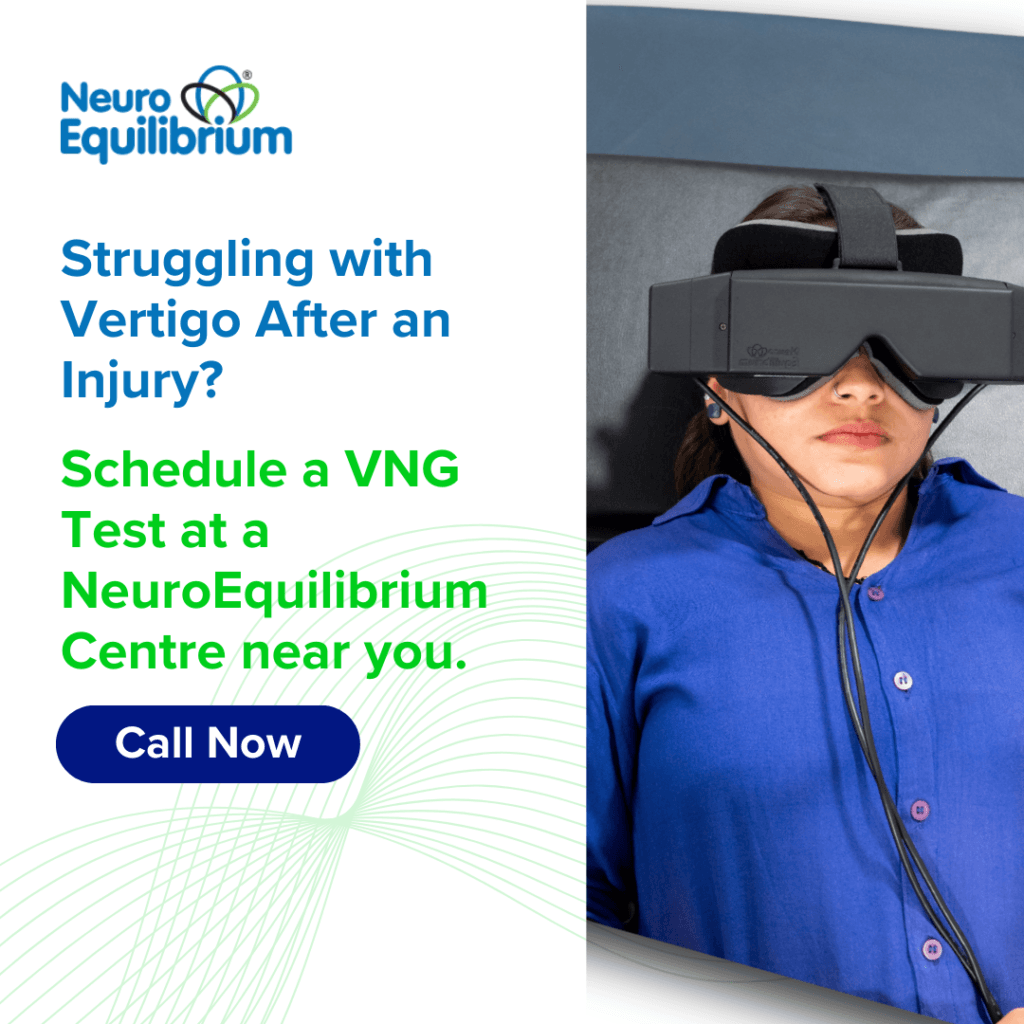
VNG Test in Brief
Videonystagmography (VNG) is a non-invasive diagnostic procedure whereby involuntary eye movements are recorded and assessed with advanced infrared video goggles. These eye movements, known as nystagmus, provide crucial insights into whether your inner ear and brain are working together effectively to maintain balance.
Purpose
The main aim of a VNG is to identify the cause of dizziness or imbalance. Eye response assessment under controlled conditions makes it possible to identify in which body area the problem has its roots: the inner ear, the nerve of the vestibular apparatus, or the balance pathways of the brain.
Conditions Detected
VNG test is particularly useful in the diagnosis of a broad spectrum of vestibular disorders, including:
- Benign Paroxysmal Positional Vertigo (BPPV) – the most typical cause of spinning sensations.
- Meniere’s disease – which is accompanied by vertigo, deafness and filling of the ear.
- Labyrinthitis and Vestibular Neuritis – usually caused by viruses.
- Acoustic Neuroma- benign tumor that may affect balance and hearing.
Duration & Safety
The test typically takes 45 to 60 minutes and is safe for most patients. The main side effect is temporary dizziness during the test, which usually subsides quickly. Some people may also experience brief nausea, but serious complications are rare.
What is Nystagmus?
VNG (Videonystagmography) is a test used to assess the function of a person’s balance system. It records and analyzes eye movements while the patient looks at various visual stimuli or changes head position.
Nystagmus refers to rapid, uncontrollable eye movements usually side to side, but sometimes up and down or in circles. It often signals an issue with the inner ear or balance system. While nystagmus can occur alongside dizziness or balance disorders, it is not caused by vertigo itself, as vertigo is a symptom rather than a condition.
Nystagmus can lead to blurry vision and difficulty judging distances. The eye movements can be rhythmic and occur in different directions, such as horizontal, vertical, or rotational. These involuntary movements are usually classified based on their patterns and causes.
The VNG Test Explained
The Videonystagmography (VNG) test is an important tool used to check for vestibular disorders, especially in patients who feel vertigo or dizziness. This advanced test uses video technology to record and analyze eye movements, helping doctors find out what’s causing balance problems. Knowing what to expect during a VNG test can help reduce anxiety and make you feel more prepared for the procedure.
What to Expect During a VNG Test?
The VNG test usually takes place in a controlled setting, like a dark room, to reduce visual distractions. Patients wear lightweight goggles that have cameras in them. These special goggles track both horizontal and vertical eye movements in real time, providing important data for doctors.
Before the test begins, patients may be asked to avoid certain medications that could affect balance or eye movements. This is important to ensure accurate results and a proper diagnosis.
Test Duration and Components
The VNG (Videonystagmography) test usually lasts between 30 minutes to over an hour. The exact time depends on the specific protocols used and how the patient responds. This time includes the clinician explaining the procedure, preparing the patient, and performing different parts of the test.
Preparing for the VNG Test
Good preparation for the VNG test is vital for an accurate evaluation of vestibular function. Here are some important steps to create the best conditions for the test and ensure reliable results.
Medications to Avoid
Before taking the VNG test, it is important to tell your healthcare provider about any medications you are currently taking. Some medications can affect test results, so you may be advised to avoid the following:
- Antihistamines: These are often used for allergies and can suppress the vestibular response, changing the test outcomes.
- Sedatives or Tranquilizers: These can affect your balance and eye movements, making the test less accurate.
- Alcohol: Drinking alcohol before the test can greatly impact your vestibular function, so you should avoid it for at least 48 hours before the test.
It’s important to be alert on your test day because alertness greatly affects the vestibulo-ocular reflex (VOR) during the examination (Wuyts & Boniver, 2008). Your healthcare provider will give you specific instructions about any medications you should stop taking before the test, as well as tips for staying alert.
What to Bring for the Test
When getting ready for your VNG test, consider bringing these items:
- Glasses: If you wear corrective lenses, bring your glasses to ensure you can see well during the test.
- Contact Solution: If you prefer to wear contacts after the test, bring your contact lens solution for comfort.
- Driver: It’s a good idea to arrange for someone to drive you home, especially if you’re having caloric testing, as it may cause temporary dizziness or disorientation afterward.
Safety and Comfort During the Test
Making sure you are comfortable and safe during the Videonystagmography test is important for both patients and healthcare providers. Knowing what to expect can help ease your concerns and improve your experience.
Conditions Diagnosed with VNG Test
VNG testing is very helpful for diagnosing different vestibular disorders. Some common conditions identified through VNG testing include:
- Benign Paroxysmal Positional Vertigo (BPPV): This condition causes brief episodes of dizziness, usually triggered by changes in head position.
- Vestibular Neuritis: This is the inflammation of the vestibular nerve, which often leads to sudden and intense vertigo.
- Meniere’s Disease: A long-term condition characterized by episodes of vertigo, hearing loss, and ringing in the ears (tinnitus), caused by fluid buildup in the inner ear.
- Vestibular Migraine: A type of migraine that can cause vertigo even if there is no headache.
- Acoustic Neuroma: A non-cancerous tumor on the vestibular nerve that can cause balance problems and hearing loss.
- Central Vestibular Disorders: Issues affecting the brainstem or cerebellum can also be found through abnormal VNG results.
Post-Test Expectations
After the VNG test, some patients may have temporary side effects, including:
- Dizziness: It’s normal to feel dizzy or off-balance right after the test, especially after caloric testing. This feeling can last from a few minutes to several hours, depending on the person.
- Nausea: Some patients may feel a little nauseous after the test, particularly if they are sensitive to vestibular stimuli.
- Fatigue: The testing can be physically and mentally tiring, which might make you feel tired afterward.
Next Steps After a VNG Test
After the VNG test, healthcare professionals will analyze the results to evaluate how well your vestibular system is working. Abnormal results in specific tests, like the caloric and saccade tests, may suggest vestibular dysfunction and the need for further evaluation or treatment. This information is crucial for creating safe exercise programs tailored to each person, especially elderly patients who are at risk of falling.
Follow-Up Consultations
One important step after a VNG test is to schedule a follow-up meeting with your healthcare provider. During this meeting, you will discuss the VNG test results and how they relate to your symptoms. Here are some key points you might cover:
- Understanding the Diagnosis: Your doctor will explain what the VNG results mean for your vestibular function and any conditions that were identified.
- Next Steps: Based on your diagnosis, your doctor will create a personalized treatment plan and explain why each recommendation is important.
- Questions and Concerns: This is your chance to ask any questions about your results, treatment options, or any ongoing symptoms you may have.
Being active in this conversation will help you take a more informed approach to your health and recovery.
Potential Treatment Options
The treatment options after a VNG test will depend on the specific diagnosis. Here’s a look at common treatments:
- Vestibular Rehabilitation Therapy (VRT): This specialized physical therapy aims to improve balance and reduce dizziness. VRT includes exercises that help the central nervous system compensate for inner ear problems.
- Canalith Repositioning Maneuvers: For conditions like BPPV, certain maneuvers can help move misplaced crystals in the inner ear, relieving vertigo symptoms.
- Medications: Depending on the diagnosis, doctors may prescribe medications to help manage symptoms like dizziness or nausea.
- Lifestyle Changes: Recommendations may include adjustments to daily activities, increasing hydration, and changing your diet to help manage symptoms.
- Counseling: Dealing with vertigo or balance issues can be stressful and affect daily life. Counseling provides emotional support and practical strategies to cope with anxiety or frustration that might arise due to these symptoms. It also helps patients adjust to lifestyle changes, making it easier to follow through with their treatment plans.
How VNG Differs From ENG
Both VNG and ENG are aimed at nystagmus measurements, but it is the technology and accuracy that is significantly different:
- VNG depends on infrared video cameras to capture eye movements in real time. This enables a very detailed analysis and play back, which provides clinicians with a better understanding of nuanced abnormalities.
- ENG uses the electrodes on the skin around the eyes. Although it is effective, it might not be accurate due to poor skin, electrodes placement or electrical interference.
Due to these benefits, VNG has become the new gold standard in vestibular testing. It is quicker, more accurate, and usually more comfortable than ENG. ENG can still be applied in some situations, like the eyelids can block the video records.
When to See a Doctor for a VNG Test
Your doctor may recommend a VNG if you:
- Experience recurrent dizziness or vertigo that affects daily activities.
- Struggle with unexplained imbalance or suffer repeated falls.
- Have persistent tinnitus, hearing changes, or ear fullness along with dizziness.
- Notice lightheadedness or imbalance after a head injury or viral infection.
Seek urgent medical care immediately if dizziness occurs with additional warning signs such as:
- Double vision
- Slurred speech
- Numbness or weakness on one side of the body
- Sudden hearing loss
These symptoms may indicate a neurological emergency such as a stroke and require prompt evaluation.
Conclusion
The Videonystagmography (VNG) test is important for diagnosing different conditions related to vertigo. By looking at eye movements and responses to certain triggers, healthcare professionals can understand how well your vestibular system is working.
If you have ongoing dizziness or balance problems, NeuroEquilibrium can help. Our clinics use advanced technology, including VNG, to accurately find out what’s causing your symptoms and offer the best treatment options. Whether you need vestibular rehabilitation therapy or ongoing care, our team is here to help you regain your balance and improve your quality of life.
1. What is the VNG test?
A Videonystagmography (VNG) test is a procedure that checks the health of the vestibular system, which helps with balance and spatial awareness. The test measures involuntary eye movements (called nystagmus) in response to different stimuli, like visual targets or temperature changes in the ear. By observing these eye movements, healthcare providers can see how well the inner ear and brain work together to keep balance. VNG is often used to diagnose conditions such as vertigo, dizziness, and other balance issues, providing important information for effective treatment.
Book a consultation at your nearest NeuroEquilibrium Clinic today.
2. What are the common symptoms that may lead to a VNG test?
A VNG test is usually recommended for people who have dizziness, vertigo, balance problems, or unexplained falls. Symptoms that may lead to this test include a false sense of movement (vertigo), lightheadedness, trouble balancing, nausea, vomiting, and ringing in the ears (tinnitus). These symptoms can suggest problems in the vestibular system, which is responsible for maintaining balance and spatial awareness. A VNG test helps identify the cause of these symptoms, giving important information for a correct diagnosis and treatment plan.
Book a consultation at your nearest NeuroEquilibrium Clinic today.
3. How does a VNG test help diagnose vertigo?
A VNG test helps diagnose vertigo by recording and analyzing eye movements in response to specific stimuli. Problems in the vestibular system often cause vertigo, and the eye movements measured during a VNG test can show abnormalities in the balance system. The test detects nystagmus, which is an involuntary eye movement linked to vestibular disorders. By examining these movements, healthcare professionals can find out what is causing vertigo, whether it is due to conditions like benign paroxysmal positional vertigo (BPPV), Menière’s disease, or vestibular neuritis, and suggest suitable treatment.
Book a consultation at your nearest NeuroEquilibrium Clinic today.
4. What should I expect during a VNG test?
The test is done in a dark room to reduce distractions. Patients will do various tasks, such as following moving lights with their eyes and responding to changes in head position. The VNG test may also include caloric testing, where warm or cold air is put into the ear canal to stimulate the vestibular system. While the test is non-invasive, patients might feel mild dizziness or discomfort, especially during caloric testing.
Book a consultation at your nearest NeuroEquilibrium Clinic today.
5. How should I prepare for a VNG test?
To prepare for a VNG test, you should avoid certain medications, like antihistamines, sedatives, and alcohol, as they can interfere with your vestibular function and affect the results. Your healthcare provider will give you specific instructions on which medications to avoid before the test. If you wear contact lenses, it’s usually best to wear glasses on the test day for comfort. Additionally, it’s a good idea to bring someone to drive you home, as some patients may feel dizzy or disoriented afterward, especially if caloric testing is done.
Book a consultation at your nearest NeuroEquilibrium Clinic today.






